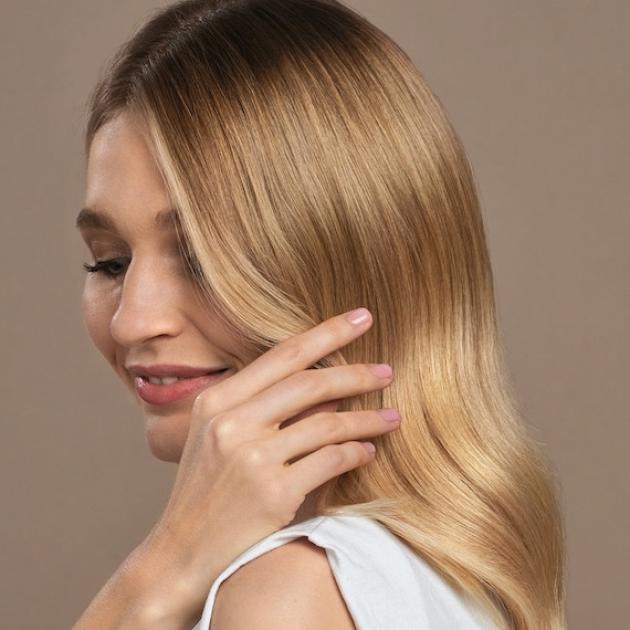How to Stop Hair Breakage in 7 Strengthening Steps
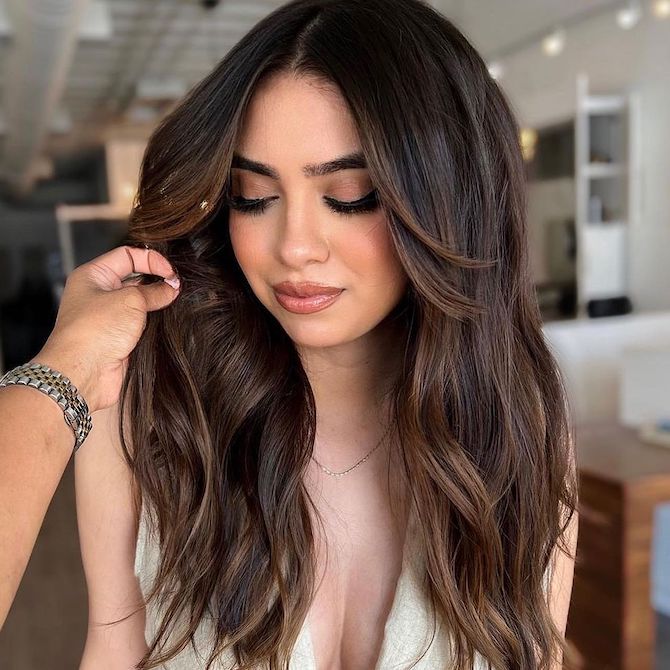
You’ll know hair breakage when you see it. Small pieces of hair start snapping off, flyaways are abundant and ends start to split, resulting in a frizzy, frazzled look. It’s a common problem for clients who have pushed their strands to the limit. So how do you bring snapping hair to a halt? Here’s everything you need to know about fixing hair breakage – at home and in the salon…
What Causes Hair Breakage?
Diet and Nutrition
A leading cause of hair breakage is down to nutritional deficiencies. The cells that make up each strand of hair need a constant supply of key nutrients, which is why healthy hair starts within. So, even if your client has a solid hair care routine, everyone can benefit from eating nourishing foods for hair health.
Keratin is a type of protein that makes up the building blocks of hair. Biotin (vitamin B7, often called ‘the hair vitamin’) boosts keratin production to support stronger strands and reduce hair breakage from the inside out. Protein, omega-3 and healthy fats are also essential for hair health - full of amino acids to support collagen production and, as a result, thick, shiny lengths.
So, if your client can’t decide what to have for lunch, these are the ingredients to add to the shopping list. Eggs, sweet potato and broccoli are all naturally packed with hair-building biotin. Nuts, seeds, oily fish (like salmon) and avocados are full of healthy fats and proteins. The recipe for hair goals.
Heat Damage
If your client is blow drying, straightening and/or curling their hair regularly, they need to take the right steps to avoid heat damage and, in turn, breakage. Without a heat protectant spray, extreme temperatures can strip strands of natural, nourishing oils, leaving hair dry, brittle and prone to snapping through the lengths.
Physical Stress
Whether it’s a too-aggressive towel-drying routine, incorrect brushing and combing, or a penchant for tight ponytails, physical stress can gradually wear hair down and cause it to break. Look for where the snapping starts to find what’s causing the damage. For example, if the hair is splitting where your client’s topknot starts, it might be time they embrace a new hairstyle. Or if it’s working from the ends upwards, it may come down to vigorous detangling. TLC is key for locks that are prone to breakage, so encourage a ‘gently gently’ approach at every stage in their care routine.
Bleach Damage
Hair that’s been lifted often needs extra care to stay healthy and strong, as bleach can have an impact on the overall condition and health of strands. This is where BlondorPlex comes in; our bond-strengthening lightener that reduces breakage by up to 97%*. Giving you up to nine levels of lift, it reinforces locks during the lightening process, keeping bleach damage and, as a result, snapping strands at bay. It’s important your client knows, no matter your lightener, bleach should be used carefully too. That means only applying it to hair at a certain level of health, and leaving a few weeks’ gap in between lightening appointments.
Sun Damage
What do color fade, brittle strands and split ends all have in common? They’re tell-tale signs of sun damaged hair. There are several ways the sun has an impact on strands. First, natural oils (known as lipids) cover the outside of each individual strand, acting like a moisture barrier. UV rays from the sun can easily break down this barrier, zapping moisture and causing dryness. Then, as well as affecting the outside, these rays can also break down keratin inside the hair, weakening its internal structure so strands are more prone to breakage. For colored hair that’s already been weakened through the dyeing process, the sun is able to break down color molecules more easily than untreated hair. This is why blonde hair can turn a brassy shade in the warmer months.
7 Tips For Fixing Hair Breakage
1. Cleanse Curls and Waves with a Conditioner
But we’re not just talking about any conditioner. We recommend a dedicated co-wash, which rids wavy and curly strands of residue, without stripping essential oils away. When hair is dry, it becomes more brittle and can break more easily. These creamy cleansers are low on lather and high on nourishment, and can be used for every wash (or every other wash) to gently purify strands and scalp.
Traditionally best for encouraging the natural curl pattern to fall into place, those with colored hair may also benefit from this extra dose of moisture. By deeply hydrating without weighing hair down, your client will see fewer knots and more moisture for manageable, elastic, silky strands that are less likely to snap or break. Recommend they try NutriCurls Cleansing Conditioner, so they can keep up the salon-worthy shine and definition at home.
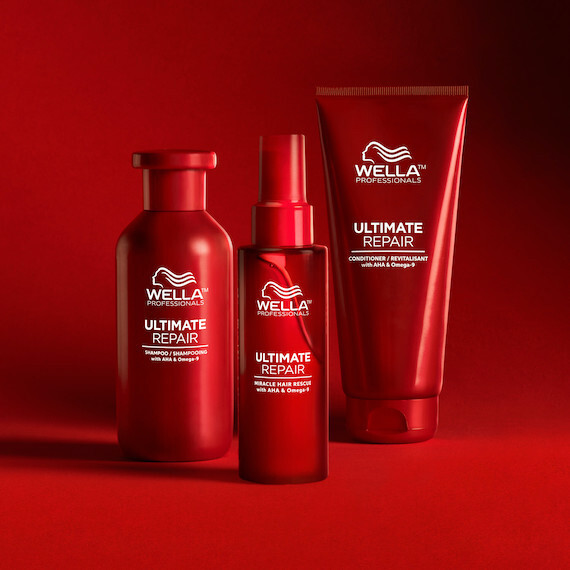
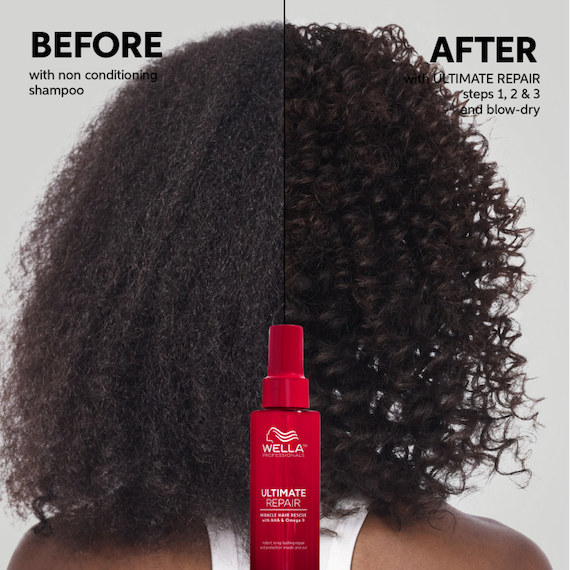
2. Embrace a Reparative Regimen
Hair breakage can happen when your strands become dehydrated and, in turn, brittle. That’s why, if you want to build strength back up, you need a hydrating hair care routine. A co-wash will help, but we also recommend imparting moisture with conditioners and treatment masks. Plus, if you alternate co-washing with traditional shampoo, you’ll want a nourishing cleanser, too.
To support damaged hair, the goal is to plump, hydrate and strengthen without weighing it down. Start with the nourishing ULTIMATE REPAIR Shampoo. Work into your clients’ hair to build a luxurious lather that deeply cleanses and detoxes the scalp, while kickstarting the bond rebuilding process in each strand. Follow with the creamy ULTIMATE REPAIR Conditioner through mid-lengths to ends. Both formulas feature a skincare-inspired blend of ingredients to repair hair breakage. AHA rebuilds hair’s internal structure while Omega-9 replenishes hair’s outer layer for an intensive hit of hydration without heaviness.
Finish with ULTIMATE REPAIR Miracle Hair Rescue, a leave-in spray that repairs hair damage in 90 seconds**. Mist through just-washed hair, allow to absorb, then blow-dry and style hair for enviable shine. The result? 12x*** smoother strands with 99% less hair breakage****. All hair types will benefit from this replenishing routine.

Image Credit: @plismam.oficial
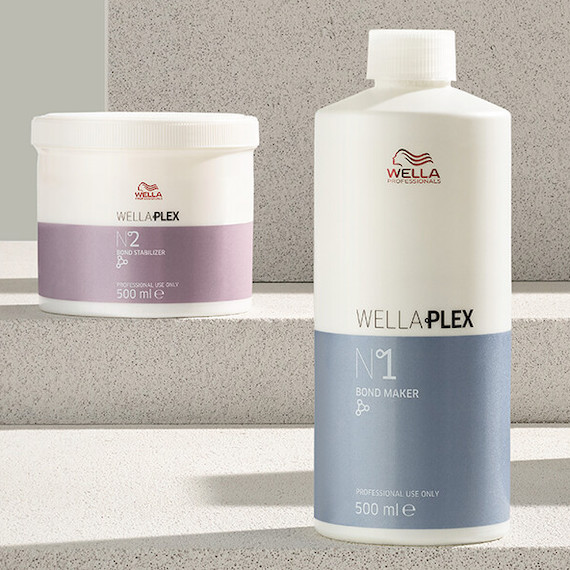
3. Work with WellaPlex
Hair breakage doesn’t have to mean your clients need to take a break from color touch-ups. However, we recommend adding WellaPlex to all color services, in order to strengthen hair’s internal bonds. If you’re a colorist, mix up a demi-permanent or permanent color product in your client’s chosen shade, then blend the No1 Bond Maker into the formula. After that dream hue has developed, rinse, and then apply the No2 Bond Stabilizer to complete the service. If you’re not a colorist and you’d like to supercharge your color appointments, simply ask for WellaPlex at a Wella salon. It’s the gentlest way to reach the perfect shade.
4. Let Locks Air-Dry
Blasting hair with a blowdryer when it’s soaking wet means you’re exposing it to more heat. That’s why we recommend letting hair air-dry at first, then only styling when locks are at least 60% dry. If you’re a hairstylist, this is easy: locks will start to naturally dry while you’re cutting your clients’ hair. Then, when clients are styling their own hair at home, recommend they gently towel-dry locks in sections first to absorb as much water as possible. This is best done with a soft, cotton t-shirt or a microfiber towel, which should be used to blot – not rub – excess water from strands to avoid breakage-causing friction.
5. Brush From the Bottom
When brushing hair, don’t rake the comb downwards from the root to the very tips. Instead, brush down through small sections, starting just a couple of inches higher than the ends. Once you’ve teased out tangles through the tips, move a little bit higher and brush downwards again. Continue this process until you reach the top, gently eking out every knot as you go. This stops the brush from dragging fragile strands and pulling at the roots.
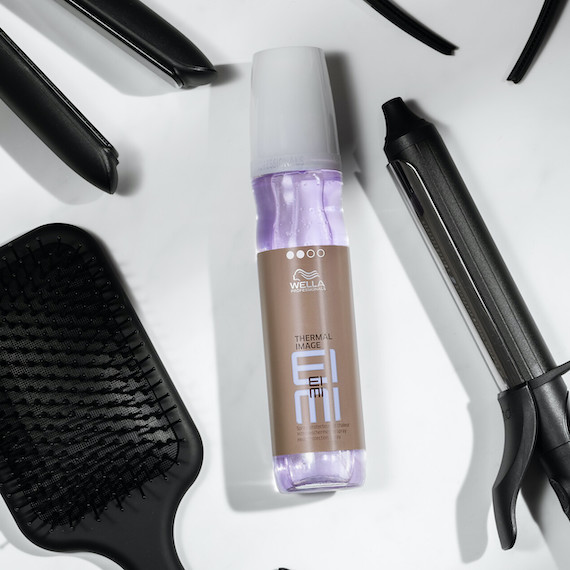
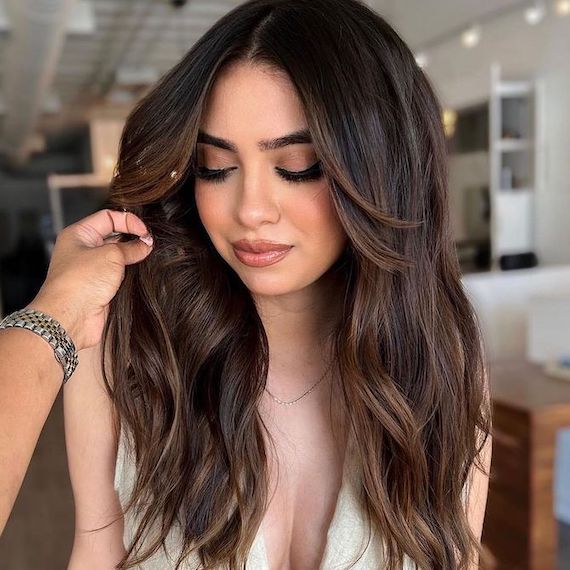
Image Credit: @biancahdrs
6. Use Heat Protection
One of the key culprits of broken hair is too much heat styling without protection. That’s why the golden rule of coiffing locks is to apply EIMI Thermal Image heat protection spray first. Before blow-drying, straightening and curling, this lightweight mist adds a veil of shine, while safeguarding strands from heat up to 220°C. A true multi-tasker. If your client’s hair is on the drier side, they could also use EIMI Perfect Me; a delicate lotion that moisturizes lengths and ends as it protects.
7. Sleep On Silk
Good hair days are guaranteed with a silk pillowcase. Smoother and softer than traditional cotton pillowcases, silk glides over strands to reduce friction – which means fewer tangles, less hair breakage and zero frizz. This luxurious fabric is also less absorbent than cotton, so it won’t strip natural moisture from individual strands, keeping hair hydrated. Our tip for clients to prolong their blow-out: before bed, secure hair in a loose high ponytail before sleeping on a silk pillowcase. Silky day two waves with extra volume? They really did wake up like this.
Looking for more ways to help your client care for their hair? Discover our complete collection of Hair Care Guides, featuring tips for every type and concern.
* When using Wellaplex N°2 with Blondorplex, versus Blondorplex alone.
** When using ULTIMATE REPAIR Miracle Hair Rescue.
*** Vs. non-conditioning shampoo.
**** When using ULTIMATE REPAIR Miracle Hair Rescue. Instrumental test versus non-conditioning shampoo.



